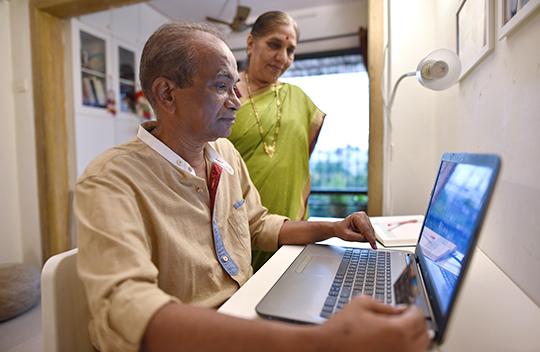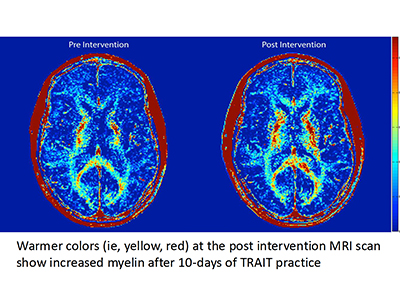
New software brings the fun of playing a video game to high-repetition rehabilitative exercises for individuals affected by stroke.
For the approximately 80 per cent of Canadians who survive a stroke — more today than ever before — timely recovery is essential to regain lost functionality and independence. High-repetition and targeted motor skills training is the tried-and-true rehabilitation approach for motor skills learning, which the video game developed by Vancouver Coastal Health Research Institute researcher Dr. Lara Boyd has in spades.
“Our hope is to gamify rehabilitation, creating an enjoyable experience for patients that will extend the exercises that they perform in structured therapy to regain limb functionality.”
Stroke is caused by a blocked or ruptured blood vessel in the brain, with symptoms including confusion, difficulty speaking, reduced balance, decreased coordination and weakness or loss of sensation, often on one side of the body. Approximately 878,500 Canadians 20 years of age or older have experienced stroke; and, that number is on the rise. More young people are experiencing stroke. In addition, an aging population and greater stroke survivorship have increased the number of individuals living with stroke.

Stroke frequently affects the middle cerebral artery, which is directly connected to the arm motor regions, Boyd relays. Damage to this area leads to a condition known as paresis, which is a weakening of one or more muscles in the arm. Reduced functionality in an affected arm is called paretic arm.
Building rehabilitation into a clinically effective and adaptable game
Boyd’s study — published in the journal of Neurorehabilitation and Neural Repair — investigated the effectiveness of the Track and Intercept Task (TrAIT) video game she spearheaded on paretic arm rehabilitation among people who had experienced stroke.
Twenty-six individuals recovering from stroke were tasked with using their paretic arm to play TrAIT, a computer-based spaceship and asteroid video game. Twenty-four healthy controls also participated in the study. Before starting a game, a player calibrated their console to their ability level by reaching their paretic arm as far as possible toward the four corners of a computer monitor, with movements tracked by the computer’s camera.
TrAIT calibration ensured that participants remained at a challenge point. The sweet spot in which progressing through the game is both challenging and achievable:
During game play, a participant’s hand and arm movements controlled an on-screen spaceship, which they used to intercept moving asteroids. Once an asteroid was caught, the participant threw it toward the target, in this case, the sun. Missed asteroids fell down the screen and exploded.
“The physical movements required to complete tasks in the game — similar to waving or cleaning a window — are clinically shown to aid in regaining hand and arm functionality.”
The features of the game varied depending on the level and ability of the player, for example, the size, speed and location of the spaceship, asteroids and sun. Visual and sound effects embedded into game play were designed to enhance and motivate participant engagement.
“Ongoing iterations of TrAIT are being developed to be both effective and safe enough that patients can perform the game’s rehabilitative exercises at home,” says Boyd. “Apart from being enjoyable, the game’s built-in customization ensures that it is appropriate for patients with varying levels of arm function.”
Watch snippets from a TrAIT game in progress:
After 10, half-hour TrAIT sessions each, all participants had completed 10,000 movements — 5,000 asteroid catches and 5,000 asteroid throws. The paretic arm function of almost all participants who had experienced stroke improved by nearly 13 per cent.
“Patients working with a physical therapist typically perform 32 reaches per session to regain motor skills in their paretic arm,” notes Boyd. “Participants playing TrAIT attained 1,000 reaches per session.”

Boyd has since updated the TrAIT software, including new features informed by patient feedback. “If we see clinical benefits from the use of TrAIT in this next round of clinical trials, we hope to make the game available for free.”
Boyd is recruiting individuals who have experienced stroke within the past three months for a follow-up study to test the impact of playing TrAIT on arm motor function. For more information, contact Dr. Lara Boyd (lara.boyd@ubc.ca) or Jordan Brocato (brocato@mail.ubc.ca).


